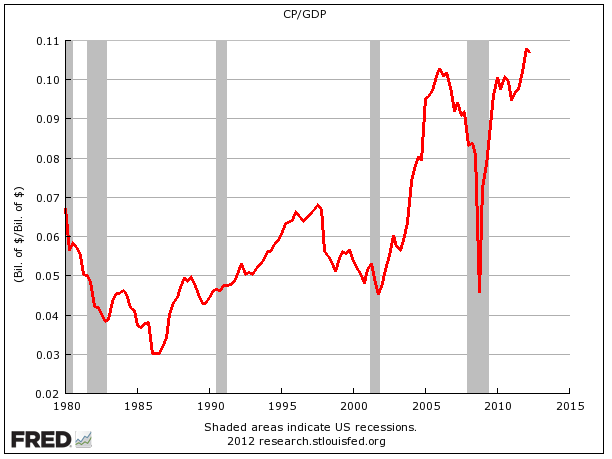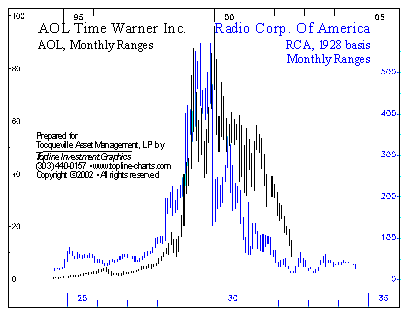|
But first, I have a mission to accomplish with today’s missive. And that’s to tell our readers what it takes to be a Casey Research analyst. After all, that’s how I started in the company, so I should know. We’re always looking for new analysts—and right now, we’re actively searching for the next passionate, enthusiastic, and hungry junior investment analyst(s) to join Casey Research.
We receive dozens of applications every month from folks looking to start or continue their career as an investment analyst under the tutelage of the greats like Doug, Louis, Marin, and Alex. But oftentimes it’s not clear just what it takes to get there… or what opportunities and further challenges to expect when you get your call up to the majors.
One of the benefits of working for a growing company like Casey Research is that, if you do good work, there’s plenty of room to blossom. Several of our formerly junior analysts have done just that recently. One now heads his own team of analysts in a sister company, while another manages a small piece of our business himself.
And while we hate to lose great talent to career paths outside of Casey Research, we must admit it happens on occasion—such as the analyst who last year took on a lead role at establishing a Spanish investment bank’s operations in the American South. A loss for Casey, but a testament to the experience and mentorship that comes with the job.
In fact, it’s those vacant shoes above that we’re seeking to fill. But it’s not all glory for the new recruit. It takes years to learn this trade, and it starts with pulling the ox cart—specifically, assisting our senior editors in performing research, picking stocks, and other investments (and having the fortitude to press on when ideas are thrown back at him or her, which happens more often than not), writing articles, briefs, presentations, and much more.
Sure, a degree in finance/accounting/economics, experience screening for and selecting investments, and a track record of generating profitable investment ideas are all plusses. But none are requirements. We don’t believe that a degree alone proves your mettle.
The only non-negotiables are a passion for investing and a hunger to excel. If you possess those traits, our talented team of experienced analysts will gladly take you under its wing to help develop your skills.
This isn’t Monster.com, so rather than continue with a boring list of job requirements, I’ll take an alternative approach by describing some characteristics I believe make for successful Casey Researchers. Then you can judge for yourself if you or someone you know really has what it takes to thrive in what is unquestionably one of the most challenging but rewarding career directions a budding analyst can take.
If you get through this list and still think you have what it takes, check out the application process below, which includes an opportunity for you to show us your best stuff.
With a hat tip to Jeff Foxworthy, you might be the next Casey Research analyst if…
- You’re drivenI mentioned this already, but it bears repeating. If you find yourself counting down the minutes to 5 o’clock each day, itching to get home and plop down on the couch to indulge in the sitcoms on your DVR, this is not the position for you.If, on the other hand, you’re a Dexter Woo… scroll down to the bottom and apply!
- You have staunch conviction…There’s an investment adage that says you shouldn’t buy a stock unless you would be thrilled if it dropped 50%, allowing you to buy more at better prices. It’s a good mindset, but it takes conviction. Especially in the face of 2,000 upset subscribers who trusted your judgment.If you write articles for one of those popular aggregators of free stock picks, it’s one thing to get an angry comment or two. After all, those folks who followed your advice got what they paid for. But try facing up to a subscriber who paid you handsomely for grade-A, thorough investment research in person at one of our summits. Do you have enough conviction in your investment analysis to put your subscribers’ hard-earned money on the line? Are you so sure you’re right that you’d risk your career on it? Because that’s the kind of certainty it takes to make an investment recommendation in one of our premier letters.
- … but are also willing to change your views when confronted with evidence that they’re wrong.I sheepishly confess that for the first 97% of my life, I was certain that technical analysis—wherein traders analyze charts to determine where a particular stock might be going—was on par with voodoo. I think many value investors share my former belief.Then I watched Casey Research technical advisor Dominick Graziano reel off three triple-digit gainers in a row by predicting the movement of gold so accurately it was almost scary. Clearly I was wrong. Seeing three consecutive trades return 430%, 133%, and 175% has a way of changing your mind.Fast forward to today, and Dominick is teaching a course on his style of technical analysis to all Casey Research analysts. I’ve learned a ton; I only wish I hadn’t shunned such a valuable investing tool for so many years.By joining us, you’ll get similar opportunities to learn about topics you may have never even thought about, or perhaps actively avoided. It sounds cliché, but you’ll be surprised by how much you can learn by keeping an open mind.
- You’ve got a keen filterThe Internet has brought us much more information than we can ever hope to parse. I can show you twenty articles that argue gold is going up, and twenty more that say it’s going down. It’s up to you to separate the useful from the bunk.Likewise, while a company’s 10-K is a trove of useful information and a good starting point for research, it’s anything but objective. With the exception of the cash flow statement (and in some cases, even that can be toyed with), every number on a financial statement involves some degree of judgment by those who prepared it. Healthy skepticism is a must.
- You’re willing to go beyond the keyboardSomewhat related to the above, while the Internet has delivered unthinkable quantities of information to us, oftentimes you need to look elsewhere for quality information.Case in point: recently, Casey Research Senior Analyst Chris Wood was puzzled by the recent actions of a company he was researching. He emailed the company’s investor relations manager, who gave Chris the company line… i.e., nothing useful.So Chris phoned the same person, asked the same question, and voilà: the IR guy answered him straightaway.The reason? Writing something in an email codifies it as digital record until the end of time. If you slip and type something stupid or sensitive, there’s no plausible deniability. That scares the pants off the suits, most of whom are obsessed with liability.
A phone conversation, on the other hand, evaporates into the air as soon as you hang up the phone, so people are generally more comfortable answering sensitive questions.
The Internet is great. But sometimes, if you want a candid answer to a tough question, you have to pick up the phone.
- You’re a clear thinker and a good writerI put these together because they go hand in hand. Becoming a good writer isn’t easy, and there’s no substitute for experience. But if you’re willing to work at it and have the ability to organize your thoughts within your own head, it’s only a matter of time until you become adept at expressing them via the written word.
One more thing: the norm among Casey Researchers is that there is no norm. We employ economists, geologists, engineers, writers, accountants, professors, appraisers, marketers, mathematicians, and attorneys. We are CPAs, CFAs, MBAs, and JDs. And that’s just off the top of my head.
So if you’d like to apply but are afraid that you don’t “fit the mold,” nonsense. There is no mold!
If you’re interested in becoming a junior investment analyst for Casey Research, here’s what to do:
In 2,500 words or fewer, convince us of your best investment idea. Present it in an entertaining and persuasive manner, backed by solid research and analysis. This is your chance to chance to set yourself apart from other submissions, so include whatever you deem necessary to make a compelling investment case.
If you’re recommending a stock, a sample structure might be:
Introduction: Tell the story behind the investment.
Financials: Analyze the financial statements and generate sales, margin, and earnings or cash flow forecasts.
What You’ll Be Watching For: Outline the major risks.
Why You Like It: Recap why you are bullish and provide any other reasons to like the stock.
Recommendation Specifics: Provide a buy price and price target. Also discuss your projected timing horizon, how you would structure the trade, and how you arrived at your price target.
We’ll judge submissions on the following criteria, in no particular order…
- Quality of the idea
- Entertainment value
- Writing quality
- Clarity
- Uniqueness
- Thoroughness
Send your submissions plus your résumé to careers@caseyresearch.com by January 31, and we’ll contact you if we think you might be a good fit. We’ll use your submission solely to review your candidacy—it will not be published. Good luck!
CSInvesting: Have a Great Weekend!
SUMZERO JOBS
Here are some roles recently posted on the SumZero.com Job Vault just in the last week. Please check the Job Vault under the Careers section of the site to apply to these and other open positions. Email liz@sumzero.com with questions or if your fund would like assistance on a search.
Analyst – Distressed and Special Situations – Special Situations and Distressed / Credit Fund – NYC
https://sumzero.com/pro/job_postings/481
Technology Analyst – Pre or Post MBA – Value-Oriented Long Short Fund – Dallas
https://sumzero.com/pro/job_postings/485
Analyst Positions – Pre and Post MBA – Long Biased, Value Oriented Special Situation Fund – NYC
https://sumzero.com/pro/job_postings/481
Associate Director of Research – Multi $Bn Multi Strategy Hedge Fund – NYC
https://sumzero.com/pro/job_postings/482
Experienced Industrials/Materials/Energy Analyst – Global Long/Short Equities Strategy Hedge Fund – San Francisco
https://sumzero.com/pro/job_postings/480
Emerging Markets Equity Analyst – Multi $Bn Investment Fund – Chicago
https://sumzero.com/pro/job_postings/484
I would submit a polished research report on your favorite idea. Forget the credentials. |














